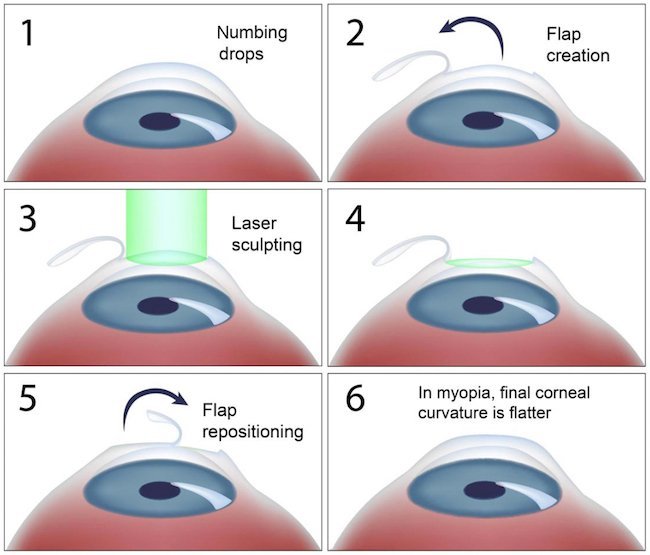Photorefractive Keratectomy (PRK)
As a form of laser eye surgery, photorefractive keratectomy (PRK) can correct refractive errors and enhance eyesight.

Photorefractive keratectomy (PRK)
What is Photorefractive keratectomy (PRK)?
PRK stands for photorefractive keratectomy, which is a type of refractive laser surgery that reshapes the cornea in order to correct myopia, also known as “short-sightedness,” as well as hyperopia, often known as “farsightedness,” and astigmatism (unevenly curved cornea). It is helpful in reducing or getting rid of the need for corrective lenses such as glasses or contacts. The absence of all refractive errors is not the primary objective of refractive surgery; rather, the goal is to reduce the patient’s dependence on corrective lenses such as glasses and contacts.
Why it is needed?
This is a technique that is completely voluntary. Patients who are fed up with having to rely on their glasses or contact lenses can benefit from this procedure. This technique is recommended for patients who have a thin cornea, a cornea that has been scarred, or an unevenly shaped cornea with poor refractive abilities.
Benefits of the Photorefractive Keratectomy
The entire process typically takes between 5 and 15 minutes each eye.
Unreliant on corrective lenses
Surgery without using blades or flaps
Thyroid Eye Disease.
An appropriate method for pilots, athletes, and those with a higher risk of flap dislocation.
There were no flap-related issues.

Steps to Take Before Having Photorefractive Keratectomy
- Patients should be above 18 years of age
- Should have had stable refraction of +/- 0.5 D for 6 months
- Should be off contact lenses for 2 weeks
- Old glass power and present degree of refractive error ( before and after applying dilating drops) will be assessed
- Pentacam scan – it will help evaluate the shape and thickness of the cornea
- Dry eyeswill be ruled out
- Proper medical history regarding diabetes mellitus, pregnancy, thyroid disorder, abnormal wound healing, or chronic usage of any medicine should be informed to your doctor.
- A thorough eye examination (anterior and posterior) will be done to rule out any abnormalities
Treatment procedure
Putting drops in one’s eyes to numb them is standard procedure. While the physician carefully scrapes away the cornea’s outermost layer, the patient is instructed to keep their gaze fixed on the reticle. An excimer laser procedure is carried out across the central cornea to alter its shape and hence correct its refractive power. The patient’s eye is protected and the healing process is aided by a bandage contact lens. When you return to the surgeon, usually between days 4 and 6, he or she will take out the contact lens.
Precautions and Care after Photorefractive Keratectomy
- After the surgery, a group of eye dropsand oral medications will be started, which should be followed as advised by your doctor.
- The eye drops should be applied without touching the tip of the bottle to the eye.
- The bandage contact lens will be removed after 4-6 days after the surgery. The patient should not rub their eyes as that would cause the contact lens to fall out. If the contact lens falls out, the lens should not be replaced by the patient. Meet your doctor as soon as possible who will place a new contact lens.
- For the first few postoperative days, the vision tends to be a little blurry due to the epithelial formation, which should not be alarming.
- A normal diet should be followed
- UV protective dark goggles should be worn while going out for the first 6 months.
- Facewash and hair wash are to be avoided for one week
- Avoid driving till your vision is absolutely clear
- Makeup applications should be avoided for 1 month
- Swimming should be avoided for 3 months.
Result of Photorefractive Keratectomy
The patient will gain his preoperative vision but without being dependent on glasses.
Who should avoid photorefractive keratectomy
- Pregnant women
- Patients of advanced glaucoma
- If you have scars on your eyes
- If you have a cataract or any cornea injury/disease
- People with recurring refractive errors
